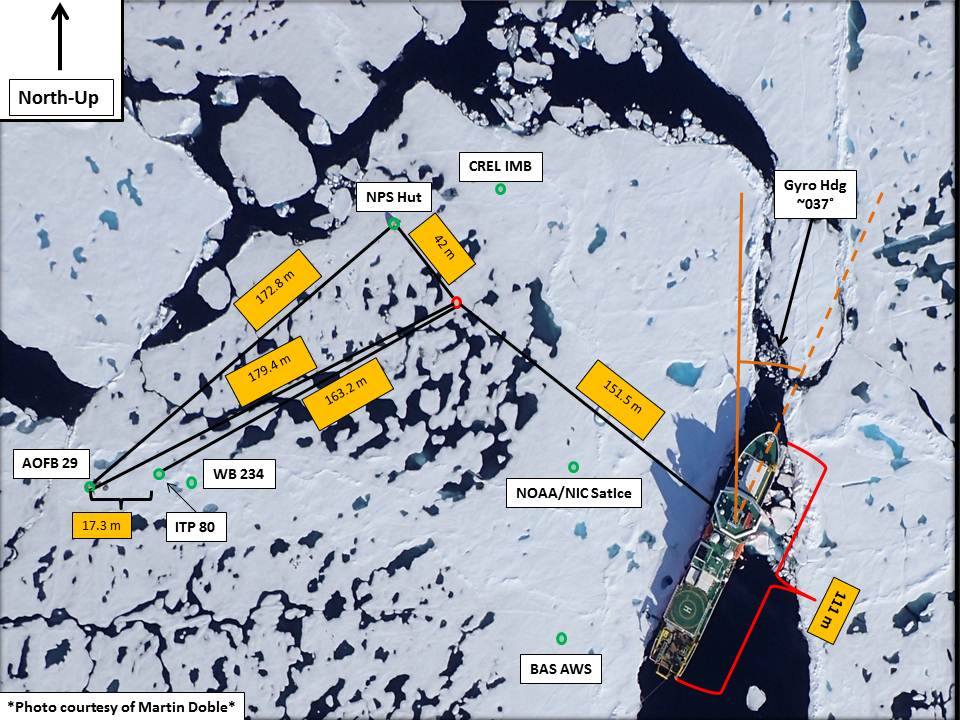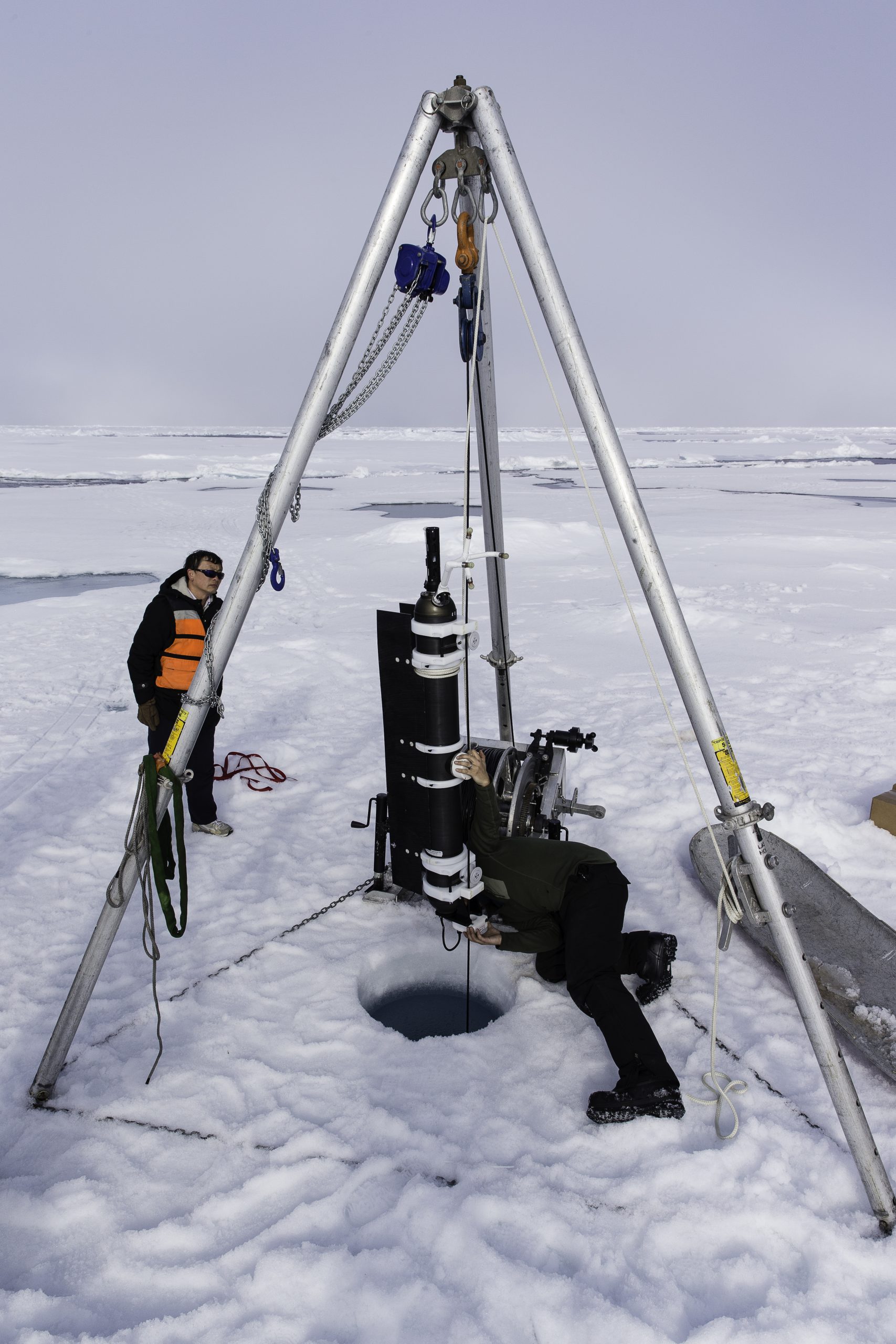ITP 80 Deployment operations
Finding an ice floe for the final MIZ cluster including ITP 80 proved to be a challenge due to the many different constituents involved. The allotted time within the cruise to find an appropriate floe played an important role as well as the science needs from various different institutions. The MIZ team desired a large multi-year floe as far North in compacted ice as possible to prolong the life of the final cluster. Other science party’s desired a floe with melt ponds that had not drained through, more typical of first year ice floes. Both floes needed to be within close range to the ship or ideally adjacent to each other in order to work efficiently with helicopter and bear guard support. As time dwindled down an ice floe was found on August 8th, 2014 at 12:15:00 GMT. This floe was not as far North as desired but comprised of both multiyear and first year ice to appease all parties involved. Although the location of this floe was constantly moving the original position was 77° 36.10’N and 146° 04.81’W. Once the floe was found and the ship moored to it, ice operations began immediately and continued until August 13, 2014 at 08:00 GMT.
ITP-V 80 was deployed at the end of camp so others were still able to sample without the possibility of entanglement. After searching the surrounding area for a sizable multiyear ice floe, it was decided to deploy the ITP roughly 220 meters from the ship. Navel Postgraduate School deployed an Arctic Ocean Flux Buoy (AOFB) roughly 17 meters from the ITP deployment site and there was also a Wave Buoy (WB) with an integrated camera system deployed in close proximity of the 2 buoys. The ITP was deployed in 2.6 meters of ice with 25cm of freeboard using the ITP winch, tripod, and a 24” hydraulic auger to accommodate the larger diameter ITP-V.

